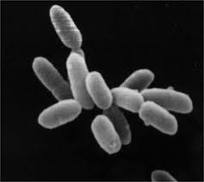Organisms in Archaea live in extreme conditions, such as:
All Archaea are prokaryotic and live in anaerobic conditions (no oxygen) … they obtain the energy they require from inorganic molecules or from light.
Originally, organisms from the Archaea were classified as being in the Kingdom Bacteria. Morphologically speaking, Archaea are very similar to bacteria. As scientists began to study these organisms, they found that biochemically and genetically Archaea are as different from Bacteria as they are from Plants and Animals. Ex. They have RNA as their nucleic acid.
How do they survive in such harsh conditions?
- Scientists have not discovered how all Archaea have adapted to survive in their respective environments, as they have only been studying these organisms for less than 20 years
- However, they have made some progress:
- The cell membrane structure of those Archaea that live in very high temps have some unusual lipids that remain stable at these temps
- Archaea that live in extremely low temps have a high content of fatty substances that remain fluid and functional at these temps
Archaea are classified into three main groups, based on metabolism:
METHANOGENS
- Methane-producing
- Live in O2-free environments (below swamps, sewage disposal plants)
- Use CO2, N2 as energy source and give off methane gas as waste
HALOPHILES
- ‘salt loving’
- Live in salty conditions (up to 15% salt – seas are only 3.5%)
- Cannot grow in weaker salt solutions
THERMOACIDOPHILES
- Heat- and acid- loving Archaea
- Such as hot springs, volcanoes, deep sea vents
- Temps >80°C are ideal
Biotechnology
Archaebacteria are used in biotechnology in a process called PCR (polymerase chain reaction).
This method uses heat, enzymes and nucleotides to make large amounts of DNA (used in forensics). An enzyme called DNA polymerase is used but it needs to be used at extreme temperatures. Most enzymes would be destroyed therefore they use the DNA polymerase from archaebacteria!

